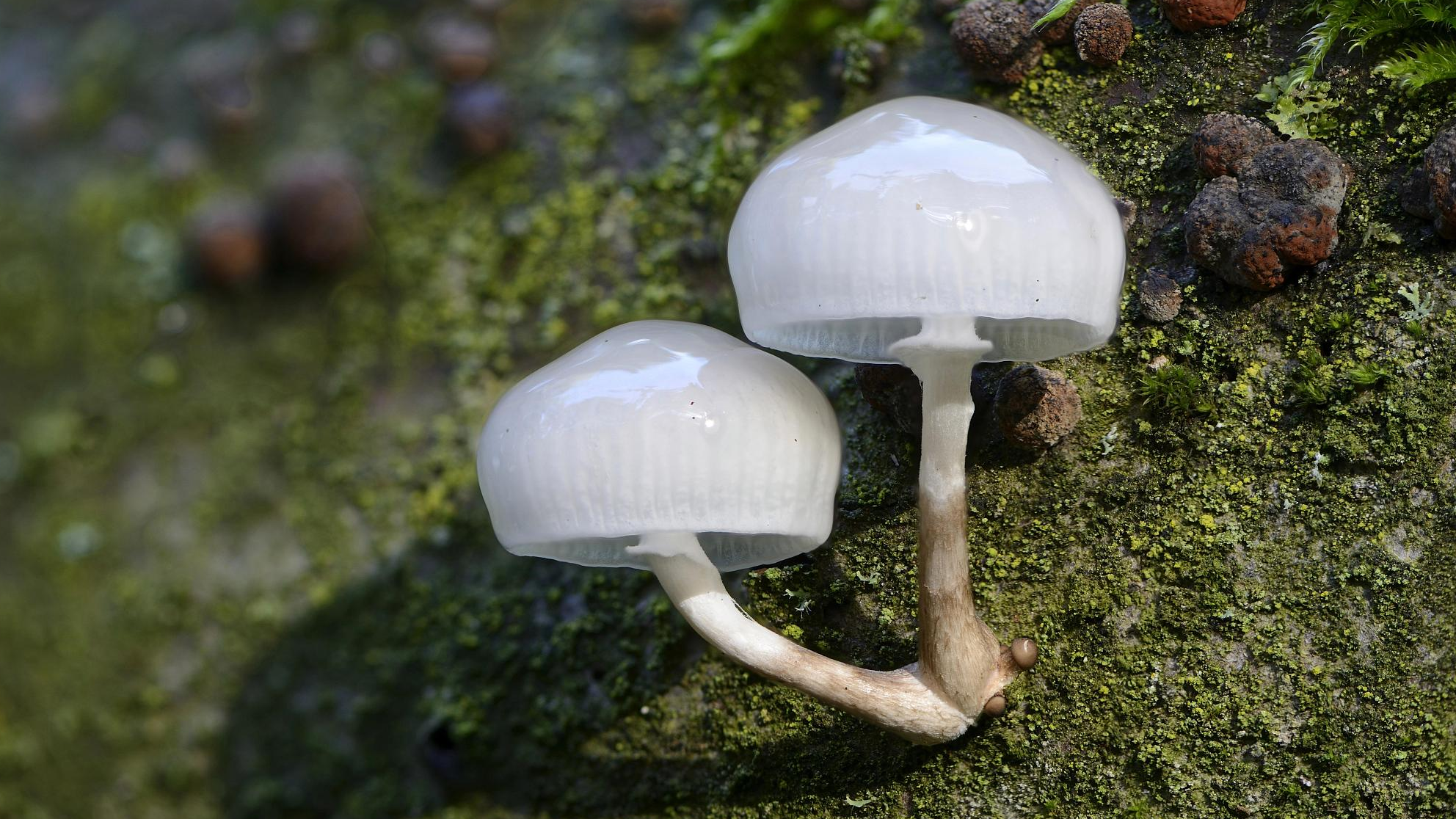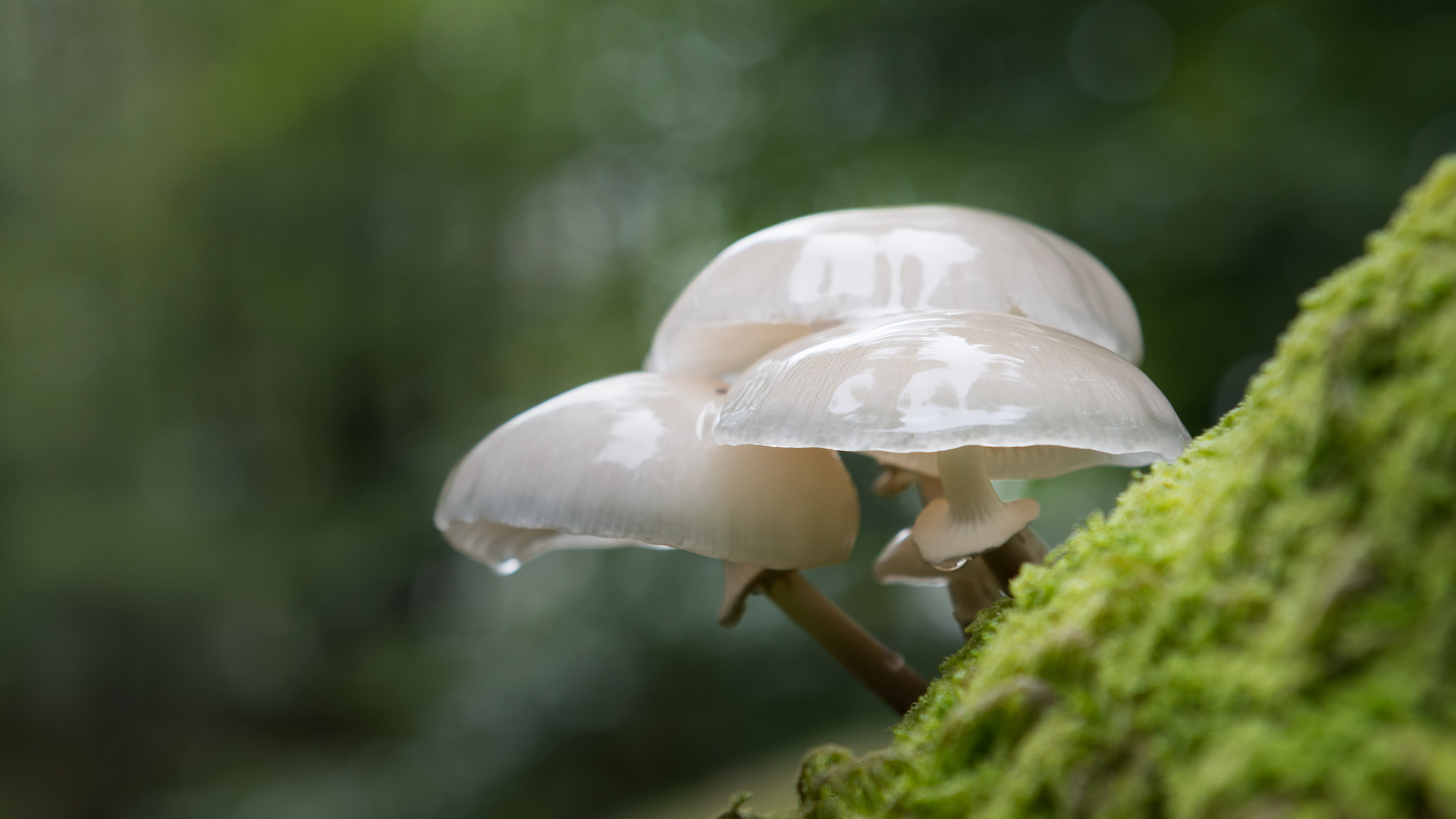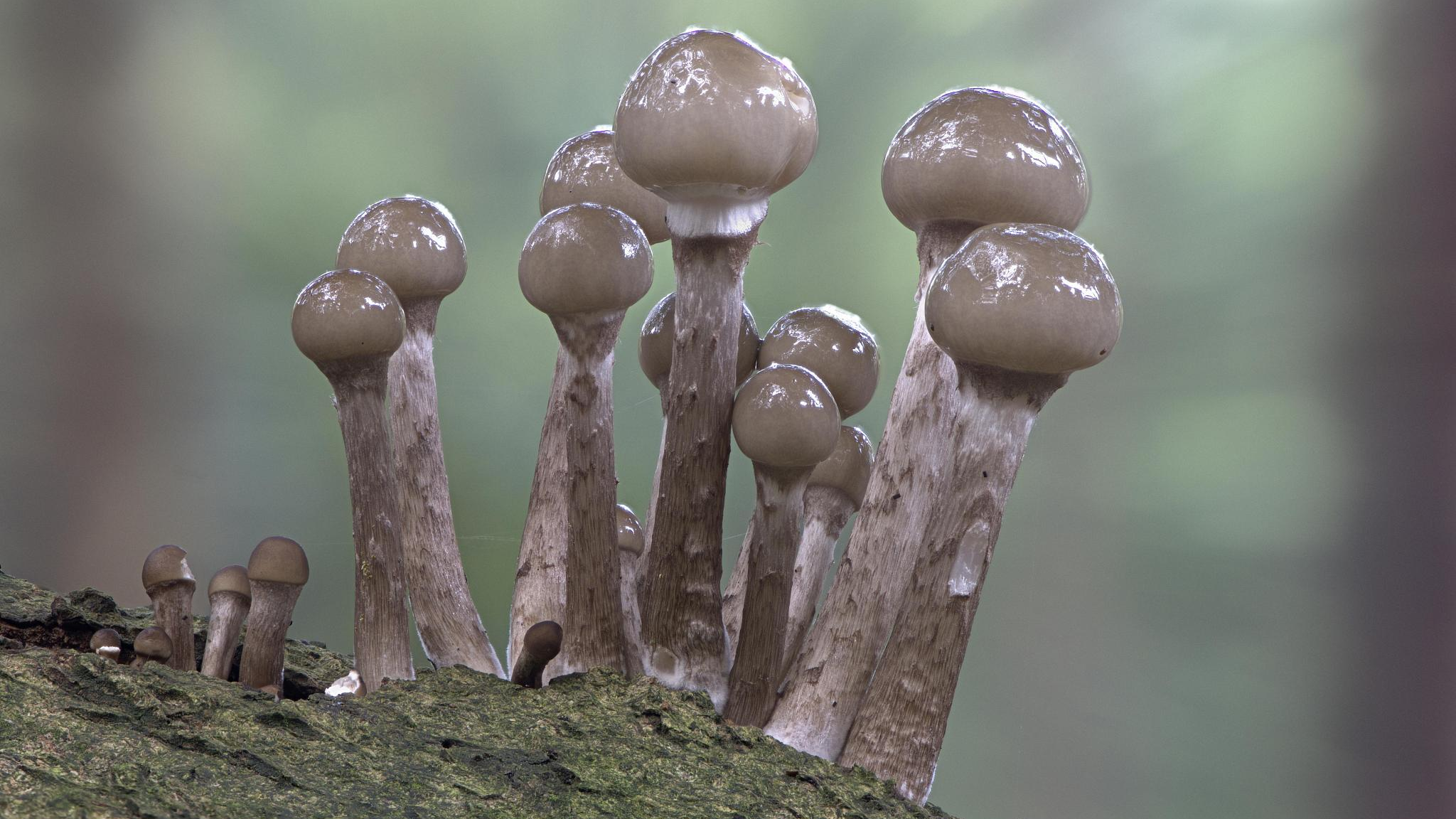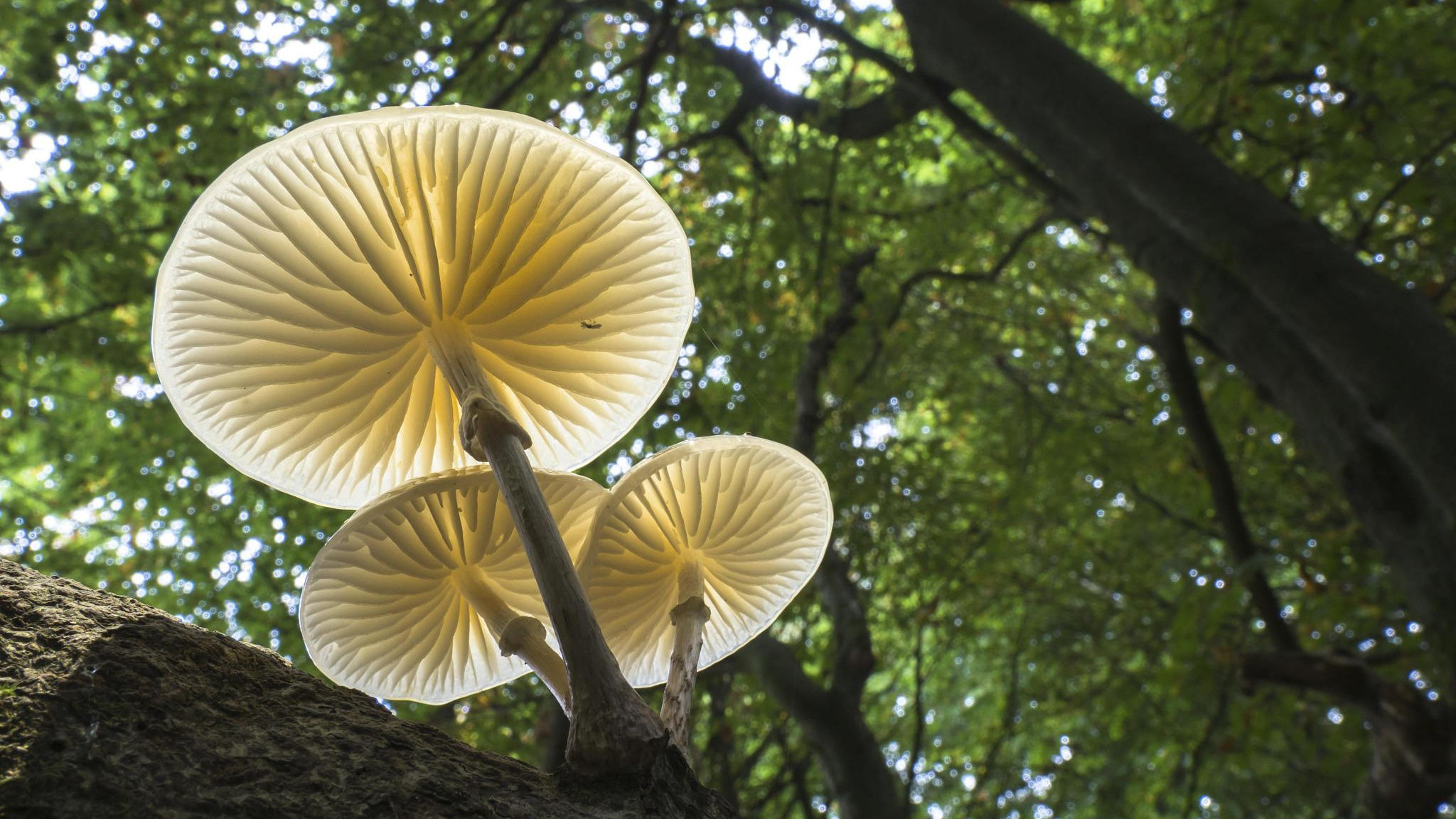If you come across porcelain fungus (Oudemansiella mucida) in the forest, you would be amazed by its glistening translucent cap, reminiscent of plants in the movie "Avatar."

Porcelain fungus (Oudemansiella mucida), Lower Saxony, Germany. /CFP
Porcelain fungus (Oudemansiella mucida), Lower Saxony, Germany. /CFP
Also known as beech tuft or poached egg fungus, the porcelain fungus is particularly fond of beech trees, whether they are dead or alive.

Porcelain agaric fungus (Oudemansiella mucida). /CFP
Porcelain agaric fungus (Oudemansiella mucida). /CFP
They are native to central and northern Europe, where the beech trees grow. You can find them from late summer to late autumn, and they often grow in large tufts.
The most noticeable feature of the fungus might be its shiny cap. The layer of transparent mucus that covers the cap gives it a white porcelain outlook, especially in wet weather.

The Oudemansiella mucida, commonly known as porcelain fungus, is native to Europe. /CFP
The Oudemansiella mucida, commonly known as porcelain fungus, is native to Europe. /CFP
When porcelain fungi are young, they are pale greyish and much more convex. Their caps get whiter and flatten as they age.

Young porcelain fungi (Oudemansiella mucida) on a tree bark, Emsland, Lower Saxony, Germany. /CFP
Young porcelain fungi (Oudemansiella mucida) on a tree bark, Emsland, Lower Saxony, Germany. /CFP
They are generally considered non-toxic and edible once the mucus on the cap is washed off and the stem is removed.

Porcelain fungus (Oudemansiella mucida) with water droplets on the underside, Harz, Saxony-Anhalt, Germany. /CFP
Porcelain fungus (Oudemansiella mucida) with water droplets on the underside, Harz, Saxony-Anhalt, Germany. /CFP
However, the porcelain fungi can release a powerful fungicide that deters or even kills their competitors. The strobilurin isolated from the fungus was once used to protect crops from powdery mildew and other microfungi.

Porcelain fungi (Oudemansiella mucida) on a tree trunk, Hesse, Germany. /CFP
Porcelain fungi (Oudemansiella mucida) on a tree trunk, Hesse, Germany. /CFP
Alien Fungi
What is the most ancient land-based life after bacteria? Fungi! An industrious decomposer in the natural world, fungi have existed for almost a billion years, at least 500 million years older than the first land plants. In the series "Alien Fungi," CGTN will explore some peculiar-looking fungi with alien features and see how they enjoy their eternal, cryptic lives on damp floors, decaying wood and hidden areas.
Read more:
Cup fungi: The little cups
Ink caps: The mushrooms with dripping ink
Coral mushroom: The corals of the land
Do you dare to eat these violet mushrooms?
Death cap: The deadly fungi with a harmless look
Fly agaric: The mushroom that inspired 'Alice in Wonderland' creators
Bioluminescent fungi: The mushrooms that glow in the dark
Bridal veil stinkhorn: A girlish mushroom that loves to wear 'skirt'
Bird's nest fungi: Dandelion-like drifting life
Barometer Earthstar: The fallen star praying for moisture
(All images via CFP)
(If you want to contribute and have specific expertise, please contact us at nature@cgtn.com.)

